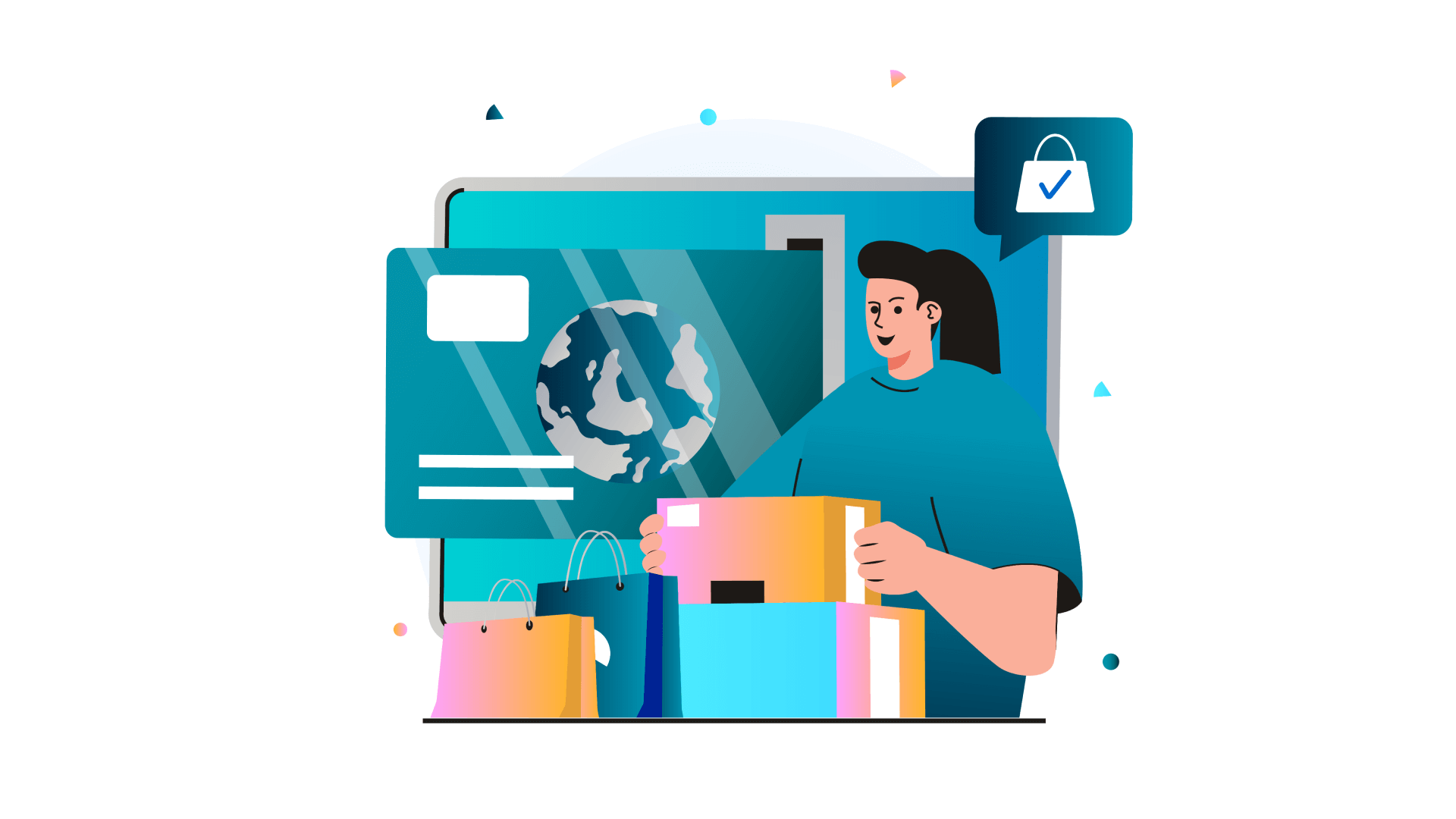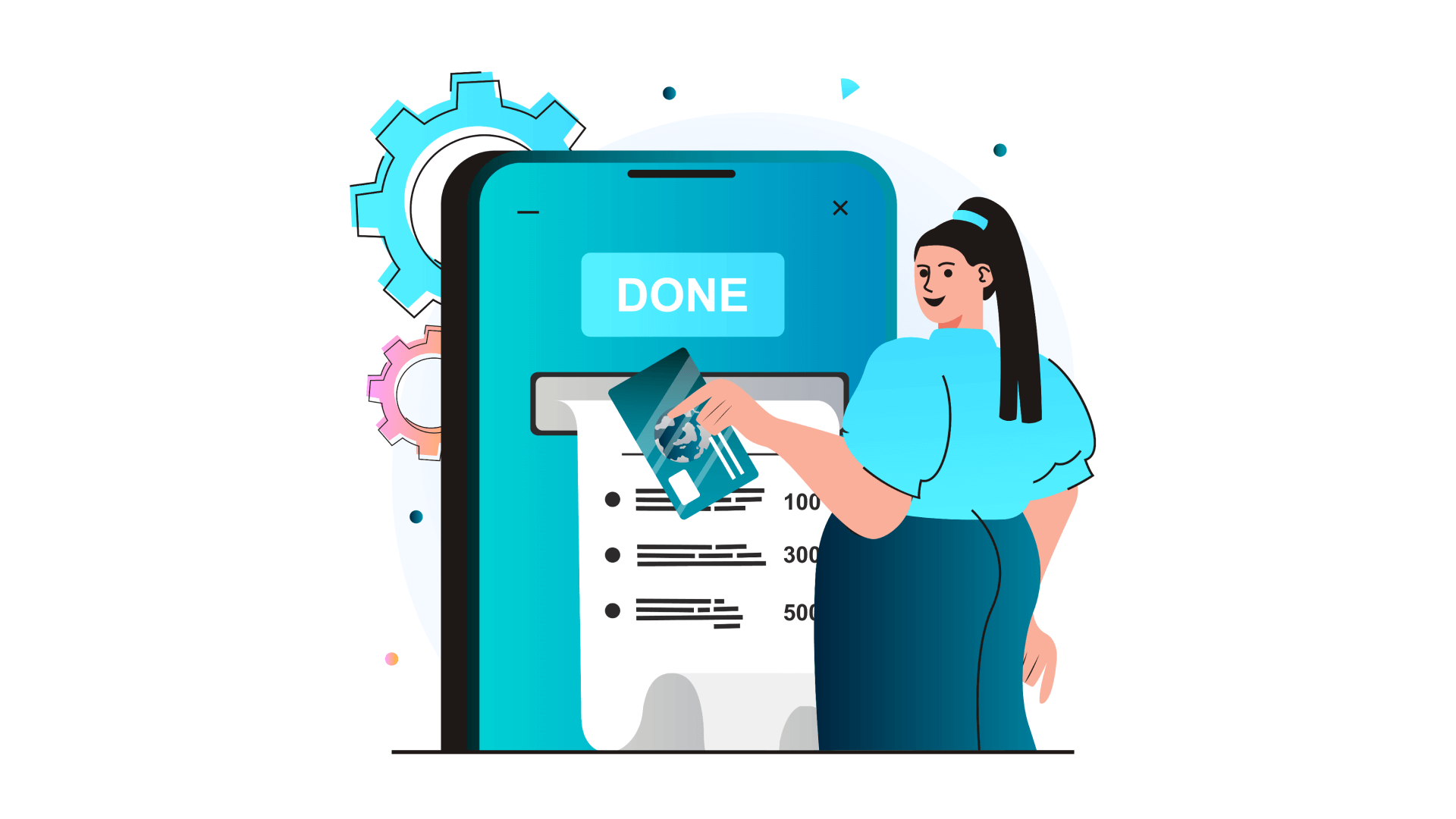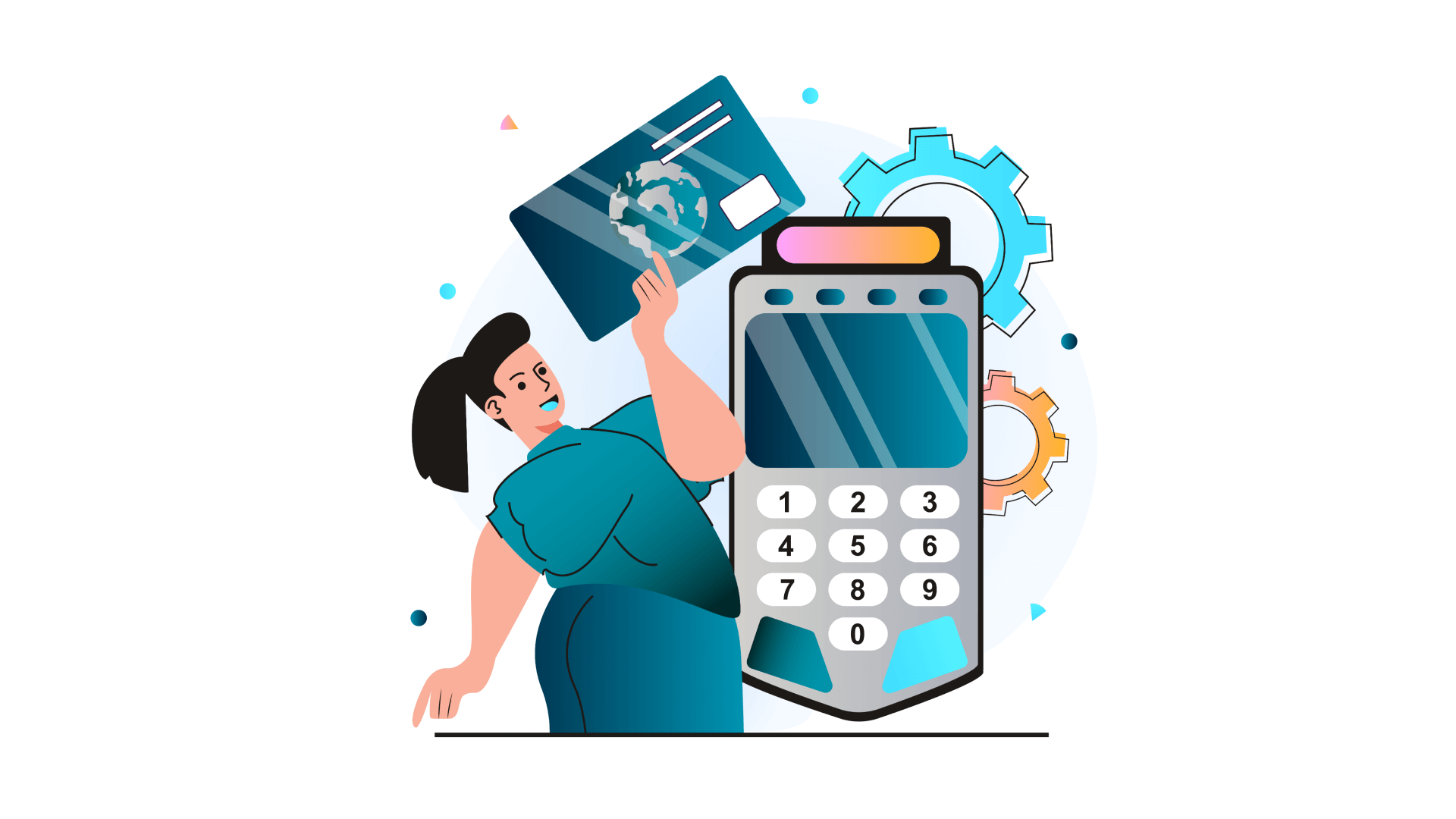Payment Gateway Development: How to Build Own System Without Pain
Mobile apps are becoming more popular every day. In every popular operating system, whether Android or IOS, the number of applications has about a hundred million, if not more. Every day, the number of applications for these operating systems is increasing, in connection with this, the need to use smartphones in everyday life is increasing.
Of course, not every mobile device has a built-in NFC chip that allows you to pay for goods and services using your smartphone without using a card. Only with such chip, users have the possibility of contactless payment for goods and services, only a specific user's card is attached to it. We have discussed this issue in our other article on buy now pay later software.
But if the smartphone is lost, the device can be used by intruders, while the procedure for blocking the user's card is rather unpleasant. In this regard, most users want to use a simple and convenient mobile application for their smartphone, with which it will be possible to pay for services and goods at any time, anywhere. If the user's card is not linked to this application, then payment will not be made and, as a result, the product or service will not be paid for, and the user will lose hope, and the seller will lose another client.
To make an appropriate payment using a mobile application, the application must have the most simple and understandable interface, so that even an elderly person can cope with the payment. Let’s dig into the details of billing software development.
Benefits of Building Own Gateway System
In general terms, a custom payment gateway is an information-automated settlement system that is built based on multifunctional database management systems. The advantages of using a custom payment gateway system include the following:
- Customization. It is possible to flexibly configure the system for the individual tasks of a particular company. The functionality of the system is built in such a way as to automate and optimize the maximum possible number of business processes.
- Openness. Such systems, as a rule, are "alive". This means there is the possibility of its modernization, personalization, and self-maintenance within the framework of current tasks.
- Modular construction. The custom payment gateway system consists of modules that are independent of each other but easily interact with each other, each of which is designed to solve certain tasks - for example, automated custom payment gateway, changing current services or tariffs in real-time, etc.
- Scalability. In a well-thought-out system, with an increase in the number of subscribers/clients, a fundamental change in the software is not required. The expansion issue is solved only by increasing the number of licenses and improving the quality of the hardware component.
- Forecasting. While working with the custom payment gateway, users can create highly accurate forecasts for groups of customers based on their costs for services, the intensity of calls, the purchase of additional service packages, content, and average costs. As a result, based on forecasts of further behavior of customers, it is possible to develop and implement new products, change existing tariff plans to improve business efficiency.

The custom payment gateway has a wide range of possibilities. Many tasks of automating and optimizing business processes are solved thanks to flexible settings. Automatic mutual settlements, data processing, reporting - this is only the top level of the custom payment gateway. Tracking customer activity, analyzing history and preparing forecasts for their processing in the marketing department is another important feature of a custom payment gateway. In general, specific opportunities are determined by the tasks assigned to the system developer from each customer.
Must-Have Features of Payment Gateway Solution
You can develop a complex system with endless functionality, but most importantly, consider features such as:
- Data processing in real-time. Carrying out settlements based on current tariffs, debiting funds from the subscriber's personal account for the services provided.
- Automated notification. In automatic mode, a message is sent or a call is made. The goal is to quickly and accurately communicate information to your client, such as the need to replenish the account, changes in the client agreement, etc.
- Storage and archiving of data. Saving customer history for a long time on your servers or in the cloud allows you to access this data anytime.
- Creation of reports. Preparation of reports based on the current service plan for each client or partner.
- Collection and analysis of customer data. Entering information on all actions of the client. For example, the number and frequency of using services, calls to technical support, requests for tariff changes, etc.
Legal Requirements for Payment Gateways
According to the Payment Services Directive (PSD2), which was implemented in all EU member states in 2018, payment services are defined as any business activity associated with their eight annexed types. You are likely providing a payment service if you are either:
- An online marketplace;
- A business providing booking services;
- A business bringing sellers and customers together.
PSD2 & Payment Services in the EU
The PSD2 was transposed into national law to make it an offense to provide payment services without the correct FCA authorization or registration. If you’re unsure whether you qualify for this, we advise that you seek legal advice. Although, you are likely affected by these regulations if you provide payment services as part of a service package or if your business receives money from a customer before relaying it to the seller.
The Payment Services Directive aims to support innovation and competition in the retail payments industry while also enhancing electric payment transaction security and customer financial data protections. This calls for payment service providers to require strong customer authentication, transaction and device monitoring, and universal, high communication standards for incident reporting and security risks.
Brexit & Payment Service Regulations in the UK
As the PSD2 is an industry-wide standard, and the U.K. have already had to implement many of the updated regulations set out in 2018, there is a lot of speculation about payment service regulations post-Brexit. Although due to COVID-19, the Financial Conduct Authority (FCA) has already issued compliance delays, such as the Strong Conduct Authentication (SCA), which is now to be applied for all e-commerce card transactions in the UK by the newly revised date; 14th September 2021. From 2022, PSPs will be required to provide additional information for transfers to or from the UK in euros, such as the name and address of the payer.
It’s assumed that moving forward, Britain, as a leader in open banking, will continue to comply with EU regulations to remain a global competitor and not stifle the industry’s growth opportunities. For example, Iceland has completely adopted PSD2 and eIDAS despite not being a part of the EU, and GDPR is already said to continue to apply to the UK and EU to protect customer data. Particularly as these industry standards for transaction security and digital IDs have also been adopted in markets around the world, including Canada and Latin America.

Alternatively, there is speculation that global markets will adopt the UK’s already broader Open Banking standards as a blueprint. Or that we could see further adjustments to regulation in the future to incorporate payment technologies such as biometrics, which continue to prove successful.
Payment Service Regulations in the US
There is no PSD2 equivalent in the USA, though they are governed by data protection regulations and non-regulatory industry standards such as the National Institute of Standards and Technology (NIST). In America, payment services are not expected to see many regulation changes. Their current adoption of neutrality means that some consider their industry regulation as more durable and flexible to future financial change. Regardless of payment technology and business models, the payment services are subject to the same rules and standards governed by the (FDA).
Keep in mind that the regulations for money transfer software development can be different.
Critical Factors to Remember in Payment Gateway Development
Before you start, you’ll need to consider several technical factors to help you make critical decisions about the layout, features, and architecture.
When making the road map for the payment gateway, you should carefully consider the following:
Interaction between customers, merchants, and the platform
When you start designing a payment gateway, you must figure out how customers and merchants will interact. This is called the interaction flow.
Decide which products and services merchants and customers might sell each other. What makes a merchant different from a customer?
Define how the payment gateway will collect data. How much data will the platform collect from customers? And will there be private customers, corporate customers, or both on the platform?
Users could be allowed to sell to each other so that customers could become merchants on their own. Whatever your decision is, it will have a major effect on your architecture and workflows.
Depending on whether the platform is a consumer-to-consumer, business-to-consumer, or business-to-business (C2C, B2C, or B2B) marketplace and whether you’re adding individuals or businesses, you’ll need to think about things like onboarding processes, know-your-customer (KYC) processes, legal requirements for AML, and so on.
Integration
During development, you must also decide how to add payment service providers to the payment gateway.
This can be done in two different ways:
- PSP integration via API, with an internal checkout page being part of the platform’s frontend.
- Redirection, leading the user to the payment provider’s designated, external checkout page.
- Communication is also an important part. You can send information to your customers and merchants by integrating message providers like email or SMS services.
Scalability
When making a payment gateway, you need to know your numbers and how quickly you want the system to scale.
That means you need to know how busy the payment gateway will be and how many transactions it will handle in a certain amount of time.
Other factors are:
- Estimated number of transactions in a year, a few years, etc.
- Maximum peak load expected in a day, an hour, and a minute, or at certain times, like during peak seasons.
- Time schedule for when the system will handle a specific transaction load.
- All of your estimates will affect the design and development process.
Volume affects scalability. A payment gateway that handles mostly a few high-value transactions doesn’t need the same scalability as a system that handles a lot of traffic and a lot of small transactions.
Time to Market
Depending on the system's functionality, flexibility, and scalability, it can take more or less time to set up the payment gateway.
The more complicated a system is and the better it should scale, the longer it will take to make and the longer it will be before it goes live. Most of the time, there are two situations:
- The payment gateway will be released as soon as possible, so the product probably won’t have all of the features and options for scaling. It might only let fewer customers in, but it speeds up the iteration process.
- The product has been released with all its features and can be scaled to any size. This plan is great if a lot of customers sign up for accounts and do a lot of business on the platform. But you may also have spent money on infrastructure that won’t be used until the platform becomes popular.
- The first choice is good for most businesses because it fits the Agile Development principles.

System Architecture
Once you have gained a good grip on your direction and the questions above, you can outline your payment gateway in detail. On the technical level, that means laying down a proper system architecture. It contains several crucial aspects:
- Deployment
When you deploy in more than one data center, you have to decide if you want national instances to be connected to instances from other nations under the roof of a single, comprehensive system.
It’s a decision between allowing merchants to have a global account or if they are required to register one separate account for each nation, they are active in.
- Monitoring
First, there will be technical monitoring, which means keeping track of the infrastructure’s health and ensuring that all system parts are always up and running.
Second, there will be business monitoring, which means you’ll be able to keep an eye on how many transactions, new registrations, and other things are going on in the system.
Usually, you set a baseline number of actions and transactions that you expect to happen. Once the current numbers differ from this baseline, you may need to find out why they went down and take steps to fix the problem.
- Security
It’s important to know and adhere to the KYC and AML requirements and regulations for the areas where the payment gateway will be used. The development team must also follow secure coding procedures during the development process of the payment gateway.
Devise a strategy to ensure private and financial data protection. Also, have a plan for how you will handle a security breach.
A Dispute Resolution Interface
When it comes to money, people often have many questions and complaints, so users might have some disputes. This is why it’s essential to have a simple, easy-to-use interface that makes it quick and easy to contact an issuing bank.
API Design
If you’re building an API so that other businesses can use your solution on their platforms, you need clear strategies for versioning and upgrading.
This makes it harder for you to change the APIs when you want to.
Make your APIs as stable as possible when you design them. Also, make it flexible enough that adding new payment methods is easy.
Payment Gateway Development And Integration Services
Payment gateway integration services by Ardas include:
- Integration of payment gateway with your business and website
- Online merchant platform development
- One-click virtual terminal for manual sales processing and the issue of credits
- Currency conversion facility
- Phone billing and SMS billing facility
- Download data in text format and import it into an Excel sheet
- Recurring billing on a daily, weekly, monthly, quarterly, and yearly basis
- Multiple transactions support and shopping cart integration
- Technical support and customer care services
We can also customize your personal payment gateway with other players like PayPal, Authorize, Google Checkout, etc.
How Does Payment Gateway Development Look Like?
Let’s discuss a payment gateway implementation and development lifecycle. From choosing people for your team to providing support and maintenance – see the guide on creating online payment gateway services below.
Choosing Staff for Your Project
If you plan to include many different features in a custom payment gateway, think about hiring professionals who specialize in developing those specific functions. Assign priorities at each stage of payment gateway development. Specify when the product will turn into an MVP.
An example of organizing your payment gateway development procedure is an automated examination and a sample integration of a payment gateway and related payment flows. That is how a payment gateway developer can obtain a complete picture of its functionality.
Implement such functionality as brief notifications about any errors so that team members can fix failures as soon as possible. Finally, you should have code reviews on any modifications to your product.
Coding the Payment Solution
Discuss with your team members. Cover the roadmap and split the stories into separate assignments. Which stories would you like to include? Perhaps, you’ll realize that your team will need some external teams and extra consulting from experts.
Focus on automation. You’ll see how much it can increase the overall productivity of the payment gateway developer and other people who participate. Ensuring the code’s quality is possible through implementing integration, security examinations, and end-to-end (2E).
Automation also allows for detecting and getting rid of bugs and extending the code anytime without any obstacles. Enterprise Resource Planning (ERP) will also help organize all business processes.
Product Release Stage
Once you have a feature-ready MVP, this stage of the payment gateway process shows up. Make sure that all features work without any delays or other issues by involving security testing, auto-E2E, load examinations, and penetration tests. Thus, taking care of the infrastructure is of top priority.
Later, come up with a risk-based analysis of how serious various issues discovered during the testing are. Is handling them simple? How much time may it require?
Operations, Product Support, and Maintenance
Congratulations! Now, you are an owner of a payment gateway. However, do not hurry to relax – along with building payment gateway services, the team should provide ongoing support. No matter how hard they try when testing a final product, different errors, small and big, may still take place further.
You may either ask an internal team to provide maintenance and bug fixes or hire some external specialists. In case you hired external experts before developing software, the contract may say that they are the ones to provide support for your product even after its release.
Creating software of this type is not trivial at all. Another question that might pop up in your mind is how much it may take you to build a payment gateway. Check out our next section.
How Much Does It Cost To Create A Payment Gateway?
The total cost of a solution depends on the number of features you need to implement and the complexity of integration with the rest of the systems you use. That said, manpower will be a large part of your project.

The cost of talent varies widely according to your outsourcing country. If you decide to hire a software development team in Ukraine (one of the best software outsourcing locations), these are the hourly rates you can expect in 2022:
- Business analyst - $40-$65
- Architect - $50-$80
- Project manager - $45-$70
- Junior engineer - $25-$45
- Middle engineer - $35-$65
- Senior engineer - $55-$100
- Junior QA - $25-$50
- Middle QA - $30-$50
- Senior QA - $40-$65
- UI/UX designer - $35-$60
Have Any Questions?
We have discussed the ins and outs of the payment gateway development process: how it works, factors that impact the SDLC, features to mind, legal and security aspects, how much time it might take you to design your project.
Are you ready to build a payment gateway or improve your existing project? Ardas is a solution that you might have been looking for. Now that you have a well-rounded perspective of what goes into creating a payment gateway, get in touch with one of our payment gateway development experts today to deliver custom solutions tailored to your business requirements and objectives or check our Fintech services.
